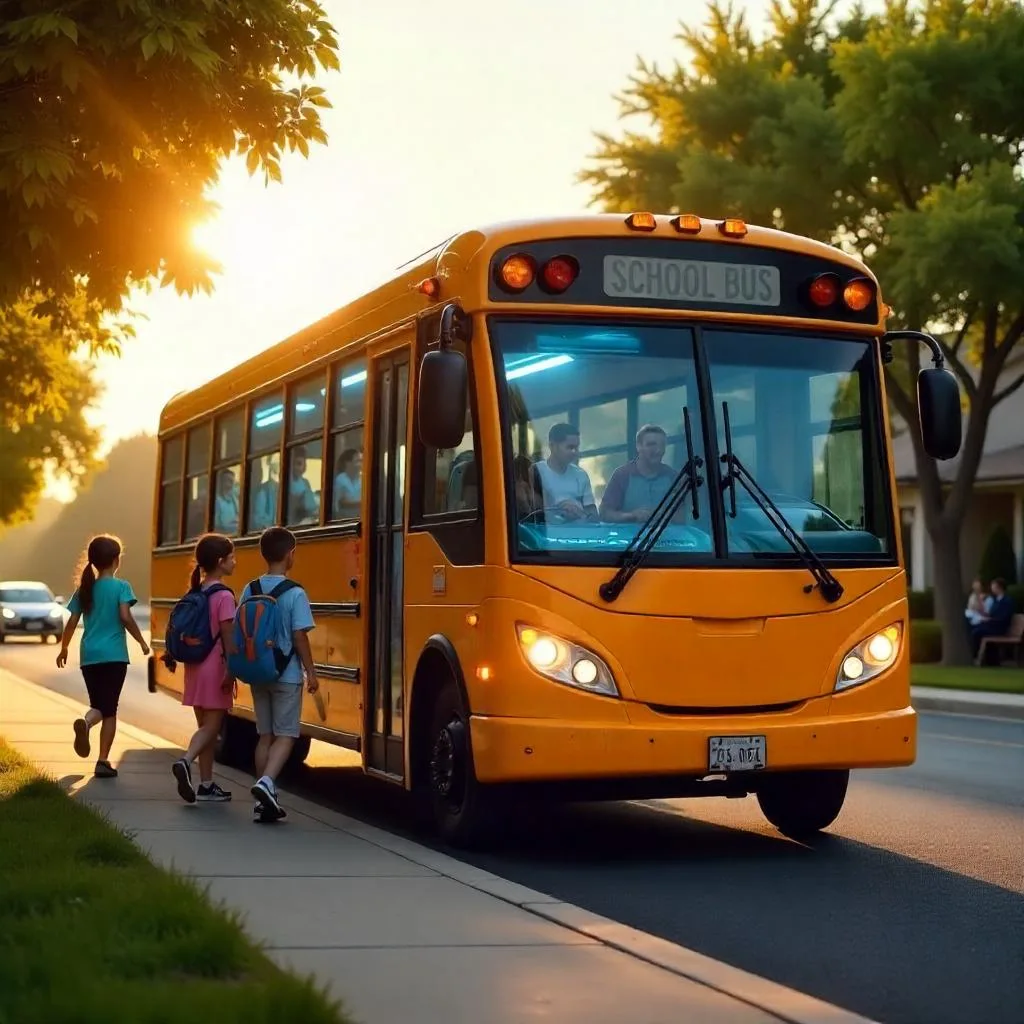Morning chaos transforms into orchestrated precision when technology meets transportation. Maria glances at her smartphone to discover that Bus 14 will arrive two minutes early thanks to optimized traffic routing. Driver Carlos receives instant weather alerts suggesting alternate pathways, while Administrator Thompson monitors district-wide operations from a dashboard that processes thousands of data points simultaneously. This seamless coordination represents today’s transportation reality.
Student mobility in 2025 operates through sophisticated digital networks that connect every participant in the educational journey, creating unprecedented coordination across previously fragmented systems.
Breaking Down Information Barriers
Yesterday’s transportation departments functioned as isolated islands. Families waited without updates, operators relied on paper schedules, and decision-makers worked with incomplete information. Contemporary solution for school transportation management eliminates these disconnections by creating integrated networks where data flows instantly between all participants.
When enrollment changes occur, traditional methods required manual coordination across separate systems, creating delays and errors. Advanced solution for school transportation management platforms automatically synchronize information—new student registrations immediately trigger route calculations, family notifications, and operator updates without administrative intervention.
Intelligent algorithms examine operational patterns continuously, processing feedback from scheduling delays, successful collections, and stakeholder communications to refine system-wide efficiency.
Predictive Communication Networks
Today’s transportation communication functions as an anticipatory intelligence system rather than reactive messaging. Modern solution for school transportation management doesn’t simply announce delays—it provides context, calculates revised schedules, and offers contingency options when disruptions exceed acceptable limits.
Voice-controlled technology revolutionizes operator workflows. Rather than handling devices during navigation, operators state “Vehicle maintenance required on Route 12,” triggering automatic technician alerts, backup deployment, and stakeholder updates. This hands-free methodology dramatically improves operational safety and response efficiency.
Predictive messaging capabilities represent the pinnacle of communication advancement. Through traffic pattern analysis, meteorological data, and event scheduling, solution for school transportation management delivers advance notifications. Families receive messages such as “Thursday morning collection delayed eight minutes due to forecasted precipitation” well before disruptions occur.
Adaptive Routing Intelligence
Fixed transportation pathways represent outdated methodology. Current solution for school transportation management systems view routes as dynamic frameworks that continuously adjust based on environmental conditions. Advanced algorithms process multiple variables—enrollment fluctuations, infrastructure changes, seasonal patterns—generating responsive pathways that self-optimize throughout operational periods.
Emergency situations demonstrate system sophistication. During adverse weather events, platforms don’t merely suspend services; they evaluate road safety, student requirements, and resource availability to create modified collection strategies that appear immediately on operator interfaces and family applications.
Special event coordination illustrates platform flexibility. solution for school transportation management integrates temporary trips into standard operations, automatically modifying regular schedules to accommodate vehicle redistributions while maintaining comprehensive stakeholder communication.
Enhanced Operational Visibility
Real-time awareness in contemporary student transportation extends far beyond basic location monitoring. Today’s solution for school transportation management generates comprehensive situational understanding that enables informed decision-making. Families access not just vehicle positions but traffic conditions, passenger capacity, and operator status through user-friendly interfaces.
Geographic intelligence creates additional awareness layers. Digital perimeters surrounding educational facilities and neighborhoods activate automated responses when crossed. Vehicles approaching school zones trigger arrival announcements, meal service adjustments, and staff preparation protocols.
Performance analytics deliver valuable operational insights. solution for school transportation management platforms identify patterns including chronically delayed stops, highest-satisfaction routes, and most efficient operator navigation methods, driving continuous improvement initiatives.
Digital Command Infrastructure
Transportation oversight in 2025 exists entirely within cloud-based environments, accessible through any internet-enabled device. These virtual command centers consolidate information from numerous vehicles, thousands of students, and countless environmental factors into understandable interfaces enabling immediate decision-making.
Cloud scalability provides operational advantages. Districts expand their solution for school transportation management capacity instantly, incorporating additional routes, vehicles, or facilities without hardware investments. Systems scale proportionally with organizational growth while maintaining consistent performance standards.
Continuity planning ensures uninterrupted operations during crisis situations. When natural disasters damaged physical offices, affected districts maintained complete fleet operations using mobile devices connected to their cloud-based solution for school transportation management infrastructure.
Mobile-Centric Operations
Personal devices have become primary interfaces for educational transportation management. Contemporary platforms emphasize mobile functionality, acknowledging that users interact with transportation systems continuously using portable technology.
Cross-platform applications eliminate compatibility barriers between different devices and software environments. Families monitor morning schedules on tablets, track progress via smartphones during travel, and receive wearable device notifications seamlessly. User experiences remain consistent across all interaction points.
Intelligent notification systems prevent communication overload while ensuring critical information delivery. Platforms learn from usage patterns, optimizing message timing and content to maximize user engagement without creating notification fatigue.
Future Transportation Evolution
Emerging innovations continue to reshape operational possibilities. Reality-enhanced navigation supports operators with directional overlays, distributed ledger technology secures sensitive information, and predictive intelligence anticipates maintenance requirements before equipment failures.
A solution for school transportation management development will likely incorporate electric fleet optimization, environmental impact monitoring, and self-driving vehicle integration as these technologies advance. Fundamental objectives remain unchanged: unified platforms delivering seamless experiences while emphasizing safety, efficiency, and stakeholder engagement.
Educational institutions adopting comprehensive digital transformation establish themselves as innovation leaders, demonstrating dedication to technology-enhanced student success. Morning transportation has evolved from logistical necessity into operational excellence that establishes positive educational experiences.
Revolutionize your district’s student transportation through advanced unified platforms delivering enhanced safety, operational efficiency, and stakeholder transparency. Educational transportation’s future has arrived – will you lead the transformation?





